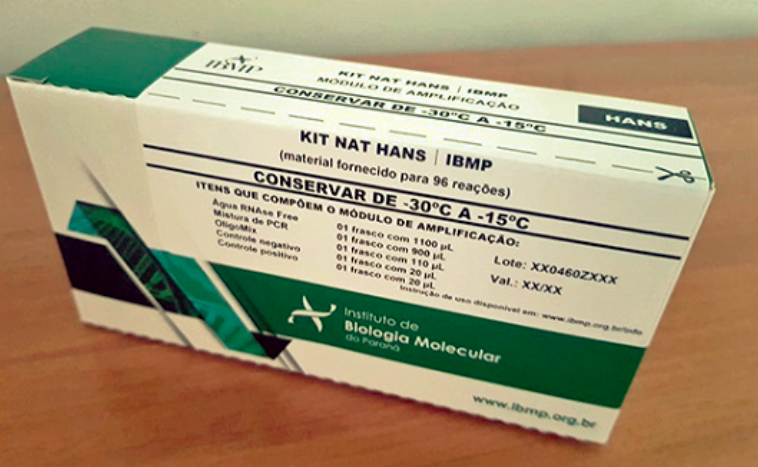RIO DE JANEIRO, BRAZIL – Brazilian scientists announced the development of a new test for the diagnosis of Hansen’s disease (leprosy), which has a worldwide prevalence of 22.9 persons per million inhabitants and is considered by the World Health Organization (W.H.O.) as a neglected tropical disease. India, Brazil, and Indonesia account for 79 percent of the world’s cases.
The new method proposed for detecting the bacillus Mycobacterium leprae, which causes the disease, is the same method used in one of the Covid-19 diagnostic tests, PCR (Polymerase Chain Reaction).
Read also: Check out our coverage on Brazil
By means of an enzymatic reaction, this test amplifies the amount of bacterial DNA, making it possible to detect it even in small quantities.

The NAT-HANS Kit has already been registered with the National Health Regulatory Agency (Anvisa), responsible for regulating and approving products and services subject to health regulatons for subsequent marketing and production in Brazil.
“The test is available, but we are working on getting it approved by the National Commission for the Incorporation of Technologies, a division of the Ministry of Health (MS) that evaluates the incorporation of new technologies, after which the MS will be able to acquire and distribute it in the National Health System,” Milton Ozório Moraes, project leader and head of the Hansen’s Disease Laboratory of the Oswaldo Cruz Institute of the Oswaldo Cruz Foundation, confirmed to SciDev.Net. “It will be available free of charge to patients,” he specified.
Carmelita Coriolano, general coordinator of Surveillance of Diseases in Elimination at the Ministry of Health, points out that much has been done to combat the disease, especially in the field of basic or applied research, to arrive at its laboratory diagnosis because Hansen’s disease is still diagnosed only through the identification of clinical signs and symptoms.
“We know that a diagnosis based solely on clinical observation can lead to errors, as this disease can present signs and symptoms very similar to other dermatoses,” she told SciDev.Net.
Marcelo Távora Mira, professor at the Pontifical Catholic University of Paraná, also spoke to SciDev.Net about the current difficulty of diagnosis: “The diagnosis of Hansen’s disease is essentially clinical and very complex, so it requires very well-trained dermatologists specialized in it, such as those working in referral centers.”
According to him, with the decentralization of care for the disease, they have been distanced from most patients, as they are generally not present in primary care teams. “Therefore, late diagnosis is still common, which contributes to the maintenance of active transmission of the disease,” he lamented.
In this context of complexity for diagnosis, the Ministry of Health official stated that “a diagnostic test will contribute to the fight against the disease, helping its diagnostic precision and care, considering that a more precise and early definition of the diagnosis will interrupt the chain of transmission and will make it possible to achieve its elimination as a public health problem.”
For dermatologist Maria Leide Oliveira, professor at the Federal University of Rio de Janeiro, the new test is “great support for clinical suspicion and differential diagnosis with other dermatoses. In addition to simulating other rheumatologic and dermatologic diseases, some cases of Hansen’s disease evolve with few symptoms and signs, making early diagnosis difficult. And because it is a neglected disease, there is little investment in technological tools,” she told SciDev.Net.
However, Moraes said the new test still faces some challenges. “The ideal would be a gold standard diagnosis, which could identify all patients carrying the disease. Currently, this is not possible due to several factors, such as the ‘window’ for detection. In addition, low bacilli (paucibacillary) forms are a particular challenge, as the conventional test (called smear microscopy) – which detects bacteria by staining slides – does not detect any patients with these forms. The new NAT-HANS test detects 75 percent of these cases,” he said.
In other words, the new test allows an important advance in diagnosis, but some cases of the disease will remain unidentified.
In this regard, Mira recalled that “the diagnosis of this disease is clinical and complex. Therefore, diagnostic support tests such as those based on the molecular detection of Mycobacterium leprae DNA are potentially important aid tools, so efforts for their development, validation, and implementation in the public health system are highly desirable.”
“But it should be mentioned that these tests support the diagnosis and should be interpreted as such, always by specialists in the field,” the professor cautioned.
Hansen’s disease is curable through multidrug therapy. If left untreated, it can cause progressive and permanent damage to the skin, nerves, limbs, and eyes.

